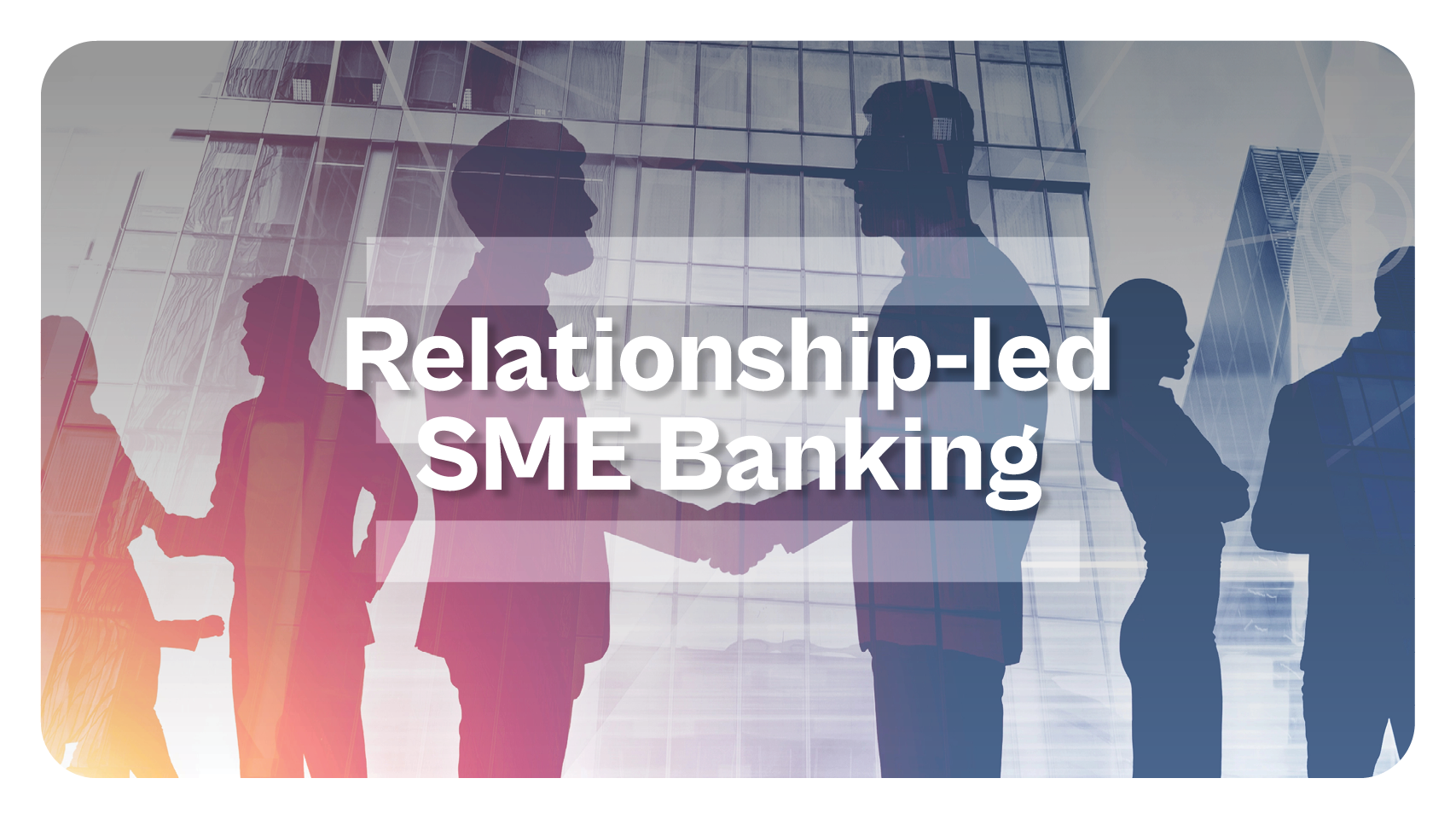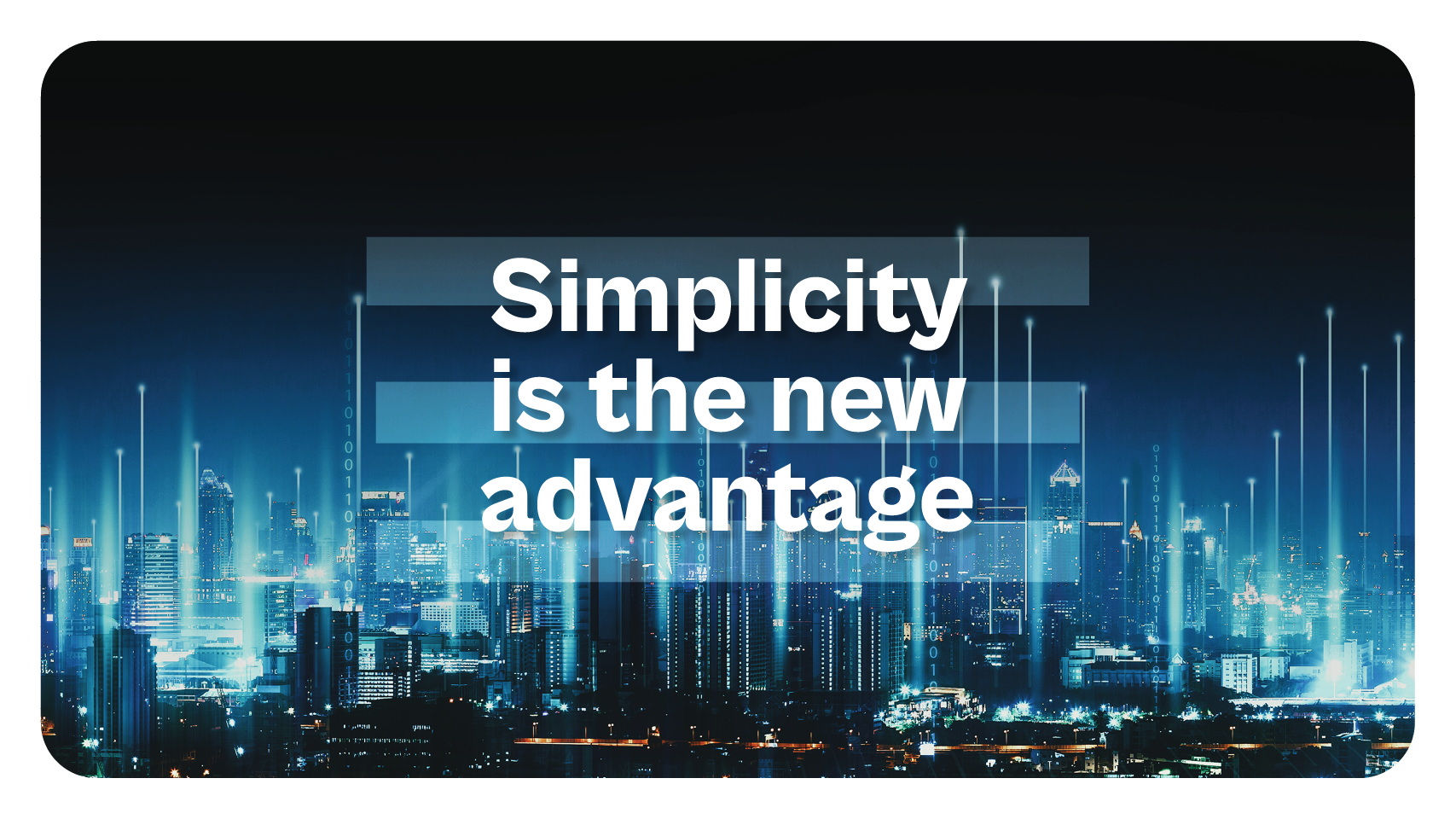
Banking Platforms: How the Platform Economy Is Reshaping Financial Services for Institutions of All Sizes

The financial services industry is undergoing a profound transformation as the platform economy redefines how value is created, delivered, and experienced.
No longer confined to traditional business models and services, institutions are shifting from linear value chains to interconnected ecosystems. These ecosystems, enabled by digital banking platforms, collaborations with financial technology companies, and open APIs, are fostering hyper-personalized, scalable, and seamless financial solutions.
What began as a fintech disruption has evolved into a sector-wide movement rippling throughout the global economy's financial landscape.
Today, both global banks and local credit unions are rethinking their banking platform strategy for SME growth, customer acquisition, and operational efficiency. The result is a new model for success and long-term competitive advantage: platform-based banking.
What Is the Platform Economy in Banking?
The platform economy refers to business models that create value by facilitating digital interactions among multiple participants. These typically include customers, partners, and third-party providers through a centralized, cloud-enabled platform.
Unlike traditional banking services, which rely on static product delivery, platform banking enables continuous, contextual engagement across various channels.
This shift empowers banks to:
- Connect users with a curated suite of services and vendors
- Leverage real-time data to deliver tailored financial advice
- Build multi-sided revenue models based on usage, partnerships, and insights
The platform model prioritizes outcomes over ownership. It allows banks to integrate external services, launch modular innovations faster, and expand reach without expanding infrastructure. In short, platform banking is about designing experiences, not just selling products.
Want to see this in action?
One of the most powerful (and often overlooked) applications of platform banking is the ability to embed a curated vendor ecosystem directly into your SME experience. By connecting clients to trusted service providers like HR, legal, logistics, marketing, etc., you deliver real operational value while deepening engagement and unlocking new revenue streams.
.png)
Explore how our vendor management platform helps banks like yours activate a new layer of value.
Why Platform Banking Matters for Banks of All Sizes
For Large Financial Institutions
Major banks are modernizing legacy systems and leveraging banking software innovations to stay competitive in an increasingly crowded market. Their strategic focus is shifting toward agility, ecosystem orchestration, and customer-centricity. To meet rising expectations and scale personalized services globally, these institutions are:
- Building API-driven innovation hubs to accelerate time-to-market for new services
- Creating multi-sided revenue models through fintech partnerships and third-party integrations
- Diversifying into adjacent verticals like insurance, healthcare, and retail, embedding financial services where customers already engage
These efforts are helping large institutions reframe their core value proposition—from static product providers to dynamic service platforms that continuously adapt to customer needs and market shifts.
For Small and Medium-Sized Banks
Small and medium-sized enterprises (SMEs) make up the economic backbone of many communities, and their banking expectations are evolving rapidly. SMEs now demand frictionless digital experiences, access to smart tools, and support that extends beyond credit products.
For regional and community banks, digital banking platforms offer a cost-effective way to:
- Extend market reach by offering 24/7 self-service tools and remote onboarding
- Deliver hyper-local services tailored to industry, geography, or community needs
- Collaborate with fintechs to offer specialized solutions (e.g., invoicing, cash flow forecasting, or supply chain financing)
Crucially, smaller banks can leverage platforms to enhance client engagement by shifting from transactional interactions to continuous value delivery. By integrating services such as financial management tools, accounting systems, and vendor networks, they establish themselves as growth partners rather than merely product sellers.
Cloud-native, modular systems allow these institutions to compete not only with larger incumbents but with nimble fintech startups, often with greater cultural proximity and stronger brand trust in local markets.
Key Benefits of Platform-Based Banking
Platform banking is not just a tech upgrade; it signifies a shift in how financial institutions create value. By shifting from siloed systems to flexible, customer-centric ecosystems, banks can respond to market needs in real time, support growth, and foster loyalty through ongoing engagement. Here's what that unlocks:
1) Hyper-Personalization
AI and data analytics allow banks to deeply understand customer behavior, enabling:
- Personalized dashboards and user interfaces
- Automated cashflow forecasts and spend categorization
- Customized lending, savings, and investment offers based on real-time financial activity
Hyper-personalization improves not only customer satisfaction but also retention and cross-sell effectiveness, especially in competitive SME and retail segments.
2) Financial Inclusion
Platforms can reach remote or underserved populations by offering:
- Mobile-first onboarding and banking services
- Biometric and digital KYC for seamless identity verification
- Embedded services through retail, gig economy, or social platforms
This democratizes access to banking and helps close the gap for those previously excluded from formal financial systems.
3) Business Agility
Cloud-native platforms enable institutions to:
- Launch and iterate on new products faster with minimal infrastructure overhead
- Test and deploy platform business models such as BaaS or embedded finance without disrupting legacy systems
- Pivot in response to regulatory updates, economic events, or competitor activity
This flexibility allows banks to become fast followers—or even first movers—without the traditional burden of core system overhauls.
4) Strategic Partnerships
Collaboration with fintechs and technology providers unlocks:
- Co-branded or white-labeled product offerings that extend core capabilities
- Modular API plug-ins that enhance functionality without building from scratch
- New distribution, acquisition, and retention channels beyond traditional branches
5) Operational Efficiency
Platform banking streamlines back-end operations by:
- Automating manual workflows (e.g., credit checks, compliance processes)
- Consolidating vendor integrations through unified interfaces
- Reducing time-to-market for updates and new features via centralized control
This leads to significant cost savings and improved scalability, which is especially critical for mid-sized banks balancing growth with leaner resources.
5) Data-Driven Decision Making
Banks can transform data into actionable insights by:
- Tracking behavioral patterns across ecosystems
- Improving credit risk assessments with real-time financial visibility
- Forecasting product demand and client needs through predictive analytics
This empowers better strategic planning, smarter portfolio management, and more accurate personalization at scale.
While platform strategies are often linked to large institutions and tech giants, the most immediate and transformational benefits may be found with smaller banks that serve SMEs. These banks already possess the trust, relationships, and local insights; platform banking simply provides them with new tools to enhance that impact digitally.
If your institution is looking to serve growing businesses better, retain high-potential clients, and deepen your value beyond lending, don’t miss our dedicated guide: What Is a Banking Platform? Why It's the Key to SME Growth in 2025
It breaks down the why and how of platform banking through an SME lens designed especially for regional banks and community-focused financial institutions ready to innovate with purpose.
Crafting a Platform Strategy: A Roadmap for Banks
A successful transition to platform banking begins not with imitation, but with introspection. The needs, constraints, and customer expectations of a regional credit union differ dramatically from those of a multinational institution.
It’s essential that financial leaders resist the urge to simply mirror what competitors are doing, and instead ground their strategy in a clear understanding of their own infrastructure, customer base, budget, and long-term vision.
Platform strategies are not one-size-fits-all. What’s right for a bank with $5 billion in assets and an IT team of 200 might be completely impractical for a bank with $800 million in assets and limited engineering resources. Creativity, cross-functional buy-in, and the ability to prioritize smartly are essential for success, especially for institutions with leaner teams.
Here’s how to build a right-sized strategy:
1. Assess Your Core
- Identify the systems and processes that are truly differentiating versus those that can be modularized, automated, or outsourced.
- Evaluate where your current infrastructure can support API integration without major disruption.
- Audit technical debt and legacy limitations that may hinder rapid transformation.
Pro Tip for SMBs: Start with non-core enhancements like customer onboarding or digital account management—low-risk areas with high customer visibility.
2. Prioritize Use Cases
- Focus on critical user journeys that align with your growth goals: SME lending, treasury management, or customer onboarding.
- Use data to identify friction points and develop use cases that add tangible value to customers.
Pro Tip for SMBs: Choose one use case with measurable impact to validate your approach before expanding. Partnering with a fintech to pilot a lightweight MVP can generate early wins and internal momentum.
3. Balance Innovation and Compliance
- Partner closely with risk, legal, and compliance teams from day one.
- Build controls around data security, AI/ML transparency, and third-party vendor governance.
- Map every stage of innovation to relevant regulatory oversight and audit frameworks.
Pro Tip for SMBs: Leverage vendor solutions that already have compliance frameworks baked in, reducing internal lift.
4. Invest in Talent and Culture
- Build multidisciplinary squads that include product, IT, compliance, and operations.
- Foster a test-and-learn culture that celebrates iterative progress.
- Develop incentive models that reward collaborative execution and customer impact.
Pro Tip for SMBs: If hiring digital talent is a challenge, consider upskilling existing staff through partnerships with tech academies or fintechs. Alternatively, contract specialized roles for early-stage initiatives.
5. Measure and Iterate
- Establish clear KPIs tied to user adoption, operational efficiency, and ROI.
- Use agile methodologies to launch, learn, and adjust quickly.
- Schedule frequent retrospectives to review platform performance and align future roadmaps.
Pro Tip for All Institutions: Embed a feedback loop with customers to refine services and uncover new platform opportunities.
By grounding your platform strategy in practical realities while keeping sight of long-term transformation, you position your institution to innovate sustainably, regardless of its size or starting point.

Assessing Your Platform Readiness
Before embarking on a transformation journey, it's essential to evaluate your organization's current level of platform readiness. This ensures strategic alignment and minimizes the risk of investing in unsuitable tools or partnerships.
Every bank, regardless of size, needs a clear understanding of its digital maturity, resource availability, and cultural agility.
Use the following self-reflection questions to frame internal discussions:
Technology & Infrastructure
- Can our current core systems support API integration and modular add-ons?
- How much of our infrastructure is cloud-native or cloud-compatible?
- What’s our ability to test and deploy new digital services without disrupting legacy systems?
Data & Analytics
- Do we have access to clean, actionable customer data?
- Are we using data proactively to personalize services or manage credit risk?
- What tools do we use to gain insights into SME behavior, cashflow patterns, and service utilization?
Talent & Culture
- Do we have in-house teams with experience in platform design, integration, and management?
- Is our culture open to experimentation, rapid iteration, and collaboration with fintechs?
- How empowered are our teams to propose and execute digital initiatives?
Partnership Ecosystem
- Have we identified the types of fintechs or vendors that align with our SME strategy?
- What due diligence processes are in place for third-party integration?
- Are we open to co-creating services with partners, or do we treat them only as vendors?
Customer Fit & Strategy
- Which customer segments would benefit most from a platform experience?
- What pain points are our SME customers facing that we’re not yet addressing?
- How can we offer value beyond traditional banking services such as financial management tools, vendor access, or tailored advice?
These questions won’t generate definitive answers overnight, but they will expose gaps, surface priorities, and build the cross-functional clarity needed to move forward with confidence.
Navigating the Challenges of Platform Transformation
While the promise of platform banking is compelling, the path to realizing it is far from straightforward. Transformation at this scale introduces new operational, regulatory, and cultural complexities that cannot be solved with technology alone. It demands a fundamental rethinking of how banks operate, prioritize, and deliver value.
Regulatory Complexity: Innovation Under Tight Scrutiny
Banks operate in one of the most heavily regulated environments in the world. Adding platform elements, especially those involving third-party vendors, open APIs, and embedded finance, multiplies the compliance burden.
Real-world challenges include:
- Cross-border compliance: Expanding services through digital channels often means serving customers in new jurisdictions. Regulations like GDPR (Europe), CCPA (California), and PSD2 (EU) each have different implications for data collection, storage, and sharing.
- AI and automation risk: With the use of algorithmic lending, smart recommendations, or chatbots comes the responsibility to prevent biases, ensure auditability, and protect against errors in decision-making.
- Vendor liability: Curating third-party services within a banking platform creates questions about responsibility when a partner fails, breaches data protocols, or delivers a poor customer experience.
Key takeaway: Compliance can’t be an afterthought. Banks need cross-functional teams, including legal, risk, IT, and product, aligned from the earliest stages of platform design. The strongest institutions are investing in “regtech” solutions that automate governance and embed compliance guardrails into development cycles.
Cultural Shifts: The Human Side of Digital Strategy
Perhaps the most underestimated obstacle is internal culture. Most banks were built on operational precision, regulatory discipline, and risk aversion, not on speed, agility, or innovation. Yet platform models require a completely different mindset: iterative testing, co-creation with partners, and customer-first product design.
Common roadblocks:
- Fear of failure: Many teams are reluctant to experiment due to reputational and regulatory fears. But without room for small-scale failure, there’s little room for innovation.
- Organizational silos: IT, compliance, product, and operations often work in parallel rather than in partnership—slowing down decision-making and causing missed opportunities.
- Outdated success metrics: Traditional KPIs like product volume or quarterly balance growth don’t capture the long-term value of ecosystem engagement or customer lifetime value.
Key takeaway: To succeed, banks must treat digital transformation as a cultural initiative, not just a technical one. That means creating incentive structures that reward collaboration, investing in upskilling staff, and embedding agile practices not just in IT but across the organization.
In short, success in the platform economy isn't about being the biggest. It’s about being the most adaptable. The banks that win won’t be the ones that have the most features but the ones that can continuously respond to their customers’ needs, navigate change with speed, and partner smartly across ecosystems.
Some Real-World Examples
- nCino, Alkami, Finacle, Q2, and Appway: These banking software providers offer cloud-based platforms that help institutions digitize lending, onboarding, and customer engagement workflows.
- Platform Partnerships: Banks collaborating with Shopify, Meta, and Amazon are embedding financial products where customers already do business, creating contextual, invisible banking experiences.
- Fintech Co-Creation: Community banks are working with fintechs to roll out SME expense tools, lending insights, and personalized savings plans based on transaction behavior.
- Vendor Management: Banks focused on SMEs are partnering with software solutions like Proven to streamline vendor management and provide marketplace access to their clients. This approach eliminates the need to build the platform, onboard, or vet vendors, ensuring both existing and prospective SME clients find value.
Organizational Alignment for Platform Success
Even the most visionary platform strategy will stall without internal alignment. Transforming into a platform-driven institution requires more than just technology. it demands coordinated effort across leadership, operations, compliance, and customer-facing teams.
1) Executive Sponsorship and Leadership Buy-In
Platform transformation is not a side project. It’s a business model shift. It must be championed at the highest levels, with executive sponsors and board-level support to align resources, timelines, and accountability. Without this buy-in, platform initiatives risk being deprioritized or fragmented.
Pro Tip: Make platform strategy a standing agenda item at leadership meetings. Tie its success to key business goals like revenue diversification, SME growth, or customer retention.
2) Cross-Functional Execution
Platform initiatives sit at the intersection of IT, product, compliance, legal, marketing, and front-line operations. These teams often have different incentives, workflows, and risk tolerances, which can create friction. Success depends on breaking down silos and enabling joint ownership.
Consider forming:
- A platform steering committee with representatives from all stakeholder groups
- Shared KPIs to measure cross-departmental success (e.g., time to launch, usage rates, partner satisfaction)
- Integrated delivery squads with product managers, developers, legal, and compliance working side-by-side
3) Managing Internal Resistance
Change, even when positive, is disruptive. Teams may worry about new tools replacing old roles, customer data flowing to third parties, or partnerships creating new risks. Clear and consistent communication is key.
What works:
- Transparent communication about the “why” behind platform investments
- Regular updates tied to customer impact, not just tech progress
- Training and upskilling to help teams adapt to new workflows
Common Pitfalls to Avoid
- IT/Compliance Deadlock: Innovation stalls when compliance flags risks, but IT lacks clarity on mitigation. Bring these teams into the process early to co-design workable solutions.
- One-Team Ownership: If platform development is viewed as “just a tech project” or “just a marketing initiative,” it will fail to scale.
- Lack of Resourcing: Underestimating the ongoing operational support needed for platform governance and partner management is a frequent misstep.
Alignment isn’t a phase. It’s a continuous discipline. Proactively work on it.

The Future: Platform Banking as the New Normal
As the digital economy accelerates, the distinction between traditional financial institutions and technology companies continues to dissolve. Banks are no longer competing solely with one another; they’re competing with embedded financial experiences delivered by e-commerce platforms, vertical SaaS providers, and fintechs that offer seamless, contextual, and often invisible financial interactions.
To remain relevant, banks must evolve from service providers into ecosystem enablers, delivering more than transactions. They must orchestrate outcomes. In this new normal, success is measured not only in products sold, but in customer experiences shaped, problems solved, and businesses grown.
The institutions that lead in this environment will be those that:
- Continuously deliver tailored outcomes based on real-time data and behavioral signals, not static products
- Operate with openness and speed, integrating third-party tools and partnerships without compromising compliance or control
- Redefine their value proposition to be that of a facilitator, connector, and intelligence layer across the SME’s business lifecycle
They’ll stop asking, “How do we get clients to use more of our products?” and start asking, “How can we embed ourselves in our clients’ daily workflows and create ongoing value?”

This vision aligns directly with the rise of platform business models. The future isn’t just digital; it’s modular, integrated, and collaborative.
Banks that understand this shift will stop building for yesterday’s expectations and start designing for tomorrow’s ecosystems, where their relevance is measured in utility, frequency of interaction, and partnership enablement.
Evolving Business Models in the Platform Economy
As the platform economy reshapes financial services, forward-looking banks are adopting new business models that extend beyond traditional deposit and lending margins. These models focus not only on delivering more services but also on embedding the bank more deeply in the lives and workflows of SME customers.
Below are three of the most transformative platform-driven business models, each offering opportunities for institutions of all sizes:
1. Banking-as-a-Service (BaaS)
Large banks are increasingly opening up their infrastructure via APIs for third parties to embed core banking services like payments, accounts, and lending into their own platforms. This model allows banks to generate revenue by monetizing their regulated infrastructure while expanding reach through partners.
Why it matters:
- For large institutions: This unlocks new revenue streams at scale, allowing banks to “wholesale” their services while fintechs or brands handle the user experience.
- Pro tip for smaller banks: While building BaaS capabilities from scratch may be out of reach, regional banks can partner with BaaS providers to extend their reach into niche fintech verticals without taking on the infrastructure burden directly.
2. Marketplace Banking
Marketplace banking turns the bank’s digital platform into a hub of curated financial and business services. In addition to core products, customers can access value-added third-party offerings from invoicing tools and insurance to legal support and payroll services all within the bank’s ecosystem.
Why it matters:
- For large institutions: This approach creates massive cross-sell opportunities and a defensible ecosystem that’s hard for challengers to replicate.
- Pro tip for community and mid-sized banks: Start by offering one or two services that solve specific SME pain points (like accounting or benefits management). Lean into areas where your brand trust can help SMEs navigate vendor choices more confidently.
Check out our marketplace for the banking industry and see all the options you could open up for your clientele. Learn more here.
3. Embedded Finance
Embedded finance means integrating financial services directly into non-financial platforms. Think of an e-commerce checkout offering real-time working capital from your bank, or a SaaS platform embedding your payment gateway.
Why it matters:
- For large banks: Embedding services into third-party platforms deepens engagement and broadens reach to customers who may never visit your app or branch.
- Pro tip for smaller banks: Partner with vertical SaaS players (e.g., tools used by local contractors, salons, or retailers) to embed financing options where SMEs already spend their time.
The Strategic Payoff
Together, these models shift the bank’s role from financial service provider to business enabler, earning daily relevance, generating diversified revenue, and improving financial data (and general data) capture. More importantly, they strengthen SME loyalty by making the bank indispensable to their operations.
The most successful banks will be those that:
- Choose the right business model(s) based on internal strengths and external partnerships
- Adapt product development to fit platform-oriented service delivery
- Design customer journeys that feel cohesive even when they involve third-party services

Conclusion:
The platform economy presents a new opportunity in the financial sector. It's reshaping banking, from how services are delivered to how value is created. For banks of all sizes, this shift is more than digital transformation; it’s a chance to become indispensable to customers’ financial lives.
Whether you’re modernizing legacy systems or building new paths for SME engagement, the opportunity is clear: embrace platform thinking, prioritize real-world outcomes, and position your institution for long-term relevance.
Your next step? Evaluate where your platform strategy stands today, explore smart integrations, and build partnerships that grow with your clients and your ambitions.
We recommend reading this next: The Hidden Layer of Platform Banking: Why Vendor Ecosystems Are the Next SME Growth Engine













